|
The
Alco FA-1's were rated at 1500 or 1600 HP, depending on when they were
built. For use as Head End Power, the LIRR removed the traction
motors and reduced the horse power (de-tuned the engines) because they
didn't need that much HP to run the generator for lighting, heating or
cooling the passenger cars. These are the "untouched" engines in
your email excerpt.
In
1978, the LIRR purchased engine-generator sets from Detroit Diesel. They
consisted of a small diesel engine, a generator and a control panel all
mounted on a single steel frame. The original Alco engine and
generator was removed from the FA body and the Detroit Diesel
"sled" dropped in. The sleds were fuel efficient and quiet
running. Info: Steve Rothaug
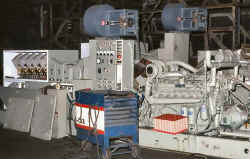 Detroit
Diesel sled being prepared for installation in the first F7 converted for
HEP use. Morris Park. Photo: Steve Rothaug Detroit
Diesel sled being prepared for installation in the first F7 converted for
HEP use. Morris Park. Photo: Steve Rothaug
The
FA's that were converted over had Detroit Sleds installed in 1983.
Units
that had the first HEP modification, but untouched were:
607
609 (scrapped in 1993)
611
612 (destroyed, and scrapped in 1993 due to a fire)
613
614
616
Units that had HEP modification were: Also, those 2 FA's were the first
ones to have the quieter HEP's: 615, 617
The
quieter sleds were in fact placed in 1987. 605,
and 606 were totally rebuilt to the point that where the original engine
room doors, and steps were, were taken out, and relocated. c.1983-84, or
so, such FA's as 605, 606 had the quieter engine.
In
the late 80's early 90's however, 615, and 617 had quieter engines
installed, or maybe mufflers because besides that, there was extra
grilling placed in front of the existing grille that was left for exhaust
when the HEP's were converted. 605 and 606 had the original grilles
around the headlight and original headlights removed, and plated over
using the vertical headlight in its place. Research: Neil Feldman
|
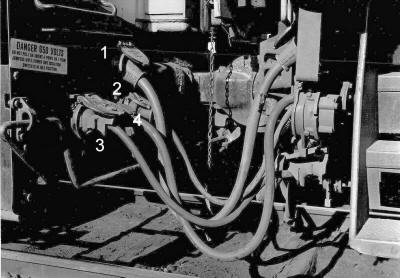
FA1- MU connections 1973
#1 is the 27 point trainline jumper
#2 650 volt single point trainline jumper-negative
#3 650 volt 4 point trainline jumper-positive
#4 trainline communications |
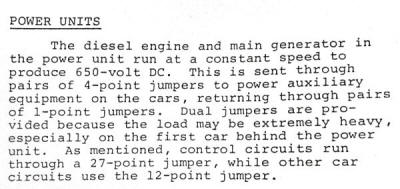 LIRR’s fleet of
diesel hauled push-pull coaches, which were converted from cars originally
built as both P72 class (MP72C, MP72T and T72) and P75 “Zip” class (MP75C
and MP75T) electric multiple unit cars. LIRR’s fleet of
diesel hauled push-pull coaches, which were converted from cars originally
built as both P72 class (MP72C, MP72T and T72) and P75 “Zip” class (MP75C
and MP75T) electric multiple unit cars.
All the
conversions to push-pull coaches (and parlors and bar-generator cars) needed
to have the same trainline connectors as found on the Powerpack units, so
they could transmit 650 VDC head end power thru the entire train, and
transmit the electrical traction control signals between the Powerpack and
the locomotive.
#1 The 27 point
trainline jumper was used to control the locomotive from the cab
control/power-pack unit.
#2 and #3: The other two jumpers were for the 650 VDC Head End Power
system, a system design unique to LIRR. For comparison, Amtrak uses twelve
4/0 (four ought) conductors in their 480 VAC HEP trainline.
No color code,
the 4 pin was the plus power, the single pin was the neg (ground) return
with NO way to mix up the connections
The red color cover plate for the 27 point MU plug seems to be the standard
at that time.
My speculation is
that #4 could be a 27 pin connector used for a communications trainline.
This could handle things like public address system, intercom, door control
(open/close all doors at high level platform), etc. Amtrak uses a 27 pin
trainline connector for these features. It has a different pin arrangement
than the MU trainline connector. Info: John Deasy
|
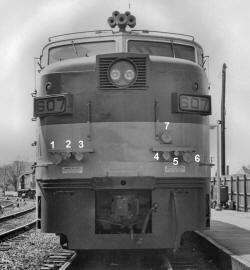
1: Communications trainline (27 pin)
2: HEP trainline (single point negative)
3: HEP trainline (four point positive)
4: HEP trainline (four point positive)
5: HEP trainline (single point negative)
6: Communications trainline (27 pin)
7: Locomotive MU control (27 pin) |
Since the C420 (and the GP-38)
locomotives were not wired to pass HEP thru to the passenger cars, the
PowerPak would have to be coupled directly to the front or rear passenger
car, to provide HEP to the cars. Such an arrangement with a C420 and
PowerPak coupled together would require turning the 2 units when running the
power around to the opposite end of the train, or an even more complicated
switching move to separate them, run them around separately and then
recouple them together on the other end of the consist.
These operating arrangements would work:
Locomotive (shoving) + cars + PowerPak —->
PowerPak + cars + Locomotive (pulling) —->
Cars + PowerPak + Locomotive (pulling) —->
A good number of the photos of the PowerPaks are not dated, but it appears
that the more recent photos show some PowerPaks with only 1 electrical
receptacle, rather than 7 electrical receptacles, on their front end. It
appears they were modified (removing 6 electrical receptacles from their
front end) over their years of service on LIRR. Info: John Deasy |
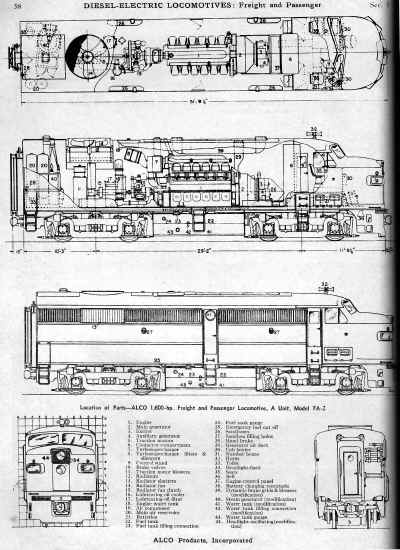
FA2 ALCO Products Inc -
Locomotive Cyclopedia 15th Edition 1956, page 58
|
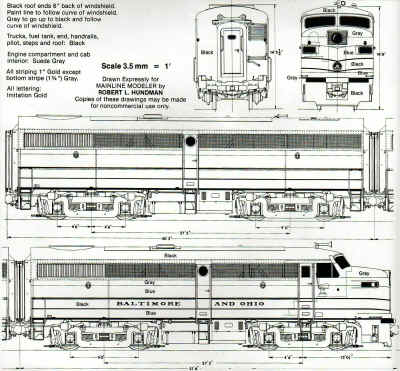
FA2 Mainline Modeler 12/1986,
page 36 - Drawing by: Robert L. Hundman
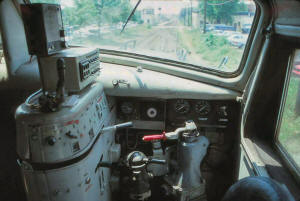
FA cab - View westbound at PD Patchogue 7/1989 Photo/Archive: Jay Bendersky
|
| LIRR FA2 #600-609 |
Builder: ALCO-GE |
PC-6
ClassBuilt 1956* |
Notes:
1,2,6 |
|
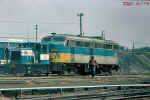
#600 Info/Photo: Tim Darnell
06/1979
Built 10/51 ex-PC 3102 |

#600
c.1984 Glendale
Photo: Roger McEnery
|
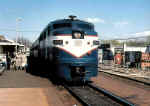
#600 Kings Park 08/78
Archive: McEnery
|
#600-WESTERN N.Y. HIST SOC., to become
NYC-1102
|
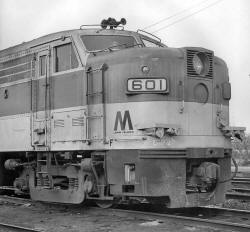
#601 Oyster Bay 1973 Photo/Archive: Richard Glueck |
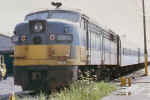
#601 LI City Built 6/1956 ex-L&N 317
Photo: Steve Hoskins

#601 Experimental paint scheme
Morris Park Shops 5/18/1971 Photo: George Turnbul
Archive: R. Craig Rutherford |
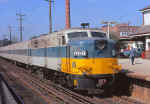
#601 westbound Jamaica-Station
9/03/1972
Photo/Archive: R. Craig Rutherford

#601 eastbound Haberman, LI
City 06/09/1978
Wm. J. Madden photo, Dave Keller archive
|

#601
at SRR of NJ 03/25/1995 Photo: Glenn Rowe
Archive: McEnery
![601 Bridgeton NJ 6-06 [tad d].jpg (83128 bytes)](601_Bridgeton_NJ_6-06_tad_d_small.jpg)
#601 at Bridgeton, NJ 6/2006.
Work will begin
on it when 602 is operational. Info/Photo: Tim
Darnell
|
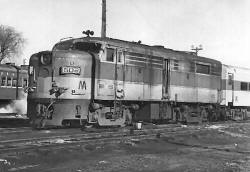
#602 Oyster Bay 1973 Photo/Archive: Richard
Glueck |
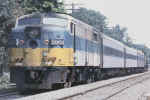
#602 Patchogue
Photo: Steve Hoskins
Built 05/1956 ex-L&N 309 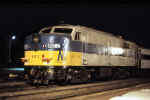
#602 Speonk
05/16/1979
Paul F. DeLuca photo, Dave Keller archive |
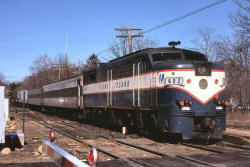
#602 Roslyn 2/26/1980
Photo/Archive: Paul De Luca

#602 Hicksville c.1980
Photo: Len Torney
|
![602 Bridgeton NJ 6-06 [tad d].jpg (88619 bytes)](602_Bridgeton_NJ_6-06_tad_d_small.jpg)
#602 at Bridgeton, NJ 6/2006.
It just recently
got trucks from an Erie Mining
RS-11 with traction motors. Info/Photo: Tim
Darnell
|
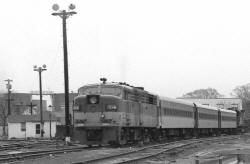
#603 Oyster Bay 1973
Photo/Archive: Richard Glueck |
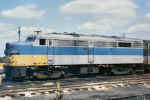
#603 Ronkonkoma
Photo: Steve Hoskins
Built 06/56 ex-L&N 315
|
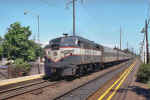
#603 Bay Shore 08-01-81

#603 05/08/2001
Photo: Roger McEnery
|
![NYC FA Win Jct 11-11-05 [tad d] big.jpg (175924 bytes)](NYC_FA_Win_Jct_11-11-05_tad_d_big_small.jpg)
#603 at Winslow Jct., NJ. Work is being done a little at a time, it may
not be restored for quite some time. The NYC paint was applied for a
Railfan event a few years back. Info/Photo: Tim Darnell
|

#604 1974 Oyster Bay
Photo:
Tim Darnell
Built 06/56 ex-L&N 314
|

#604, #618 Morris Park 11-85 retired
Photo/Info: Tim Darnell
|
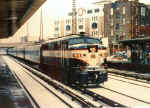
#604 at Woodside Station 1985
Photo: Bill Myers |

#604 at the Illinois Railway Museum, 06/04/08
Photo: John McCluskey |
| LIRR FA2 #605-610 |
Builder: ALCO-GE |
PC-7 Class 1951* |
Notes:
3,6,7 |

#605, #603 11/1979 Oyster Bay
Photo: Tim Darnell
Built 05/56 ex-L&N 310
|

#161, #605 Montauk HEP Power Receptacle Photo: Jack Deasy
|
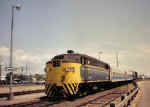
#605 Greenport c. 1994
Photo: Al Castelli
|
|
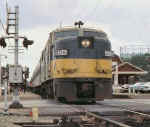
#606 Bay Shore Photo: Steve Hoskins
Arrived 06/56 ex-L&N 321
|

#606 Ronkonkoma 10/29/78 Photo: Joe Quinn
Archive: McEnery
|
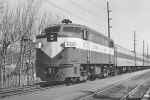
#606 Smithtown
Photo: Len Torney
|

#606 Huntington Wreck 08/26/88
Photo: Al Castelli 08/28/88
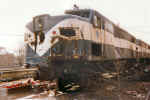
#606 08/88 Wrecked Photo: Bobby J. Kasza Scrapped
|
|
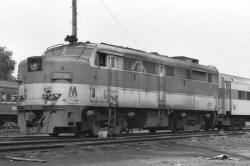
#607 Port Jefferson 1973
Photos/Archive: Richard Glueck
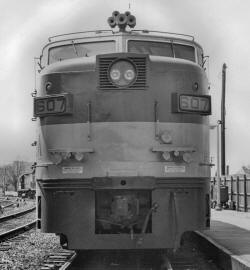
|

WM #303 Ridgley Yard, WV April, 1971 prior to
LIRR #607 as of 5/02/1972
Photo: William Birkholz

#607 c. 1970's Photo: Mike McEnery
|
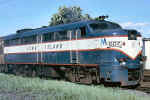
#607 Huntington
Photo: Steve Hoskins
Arrived 01/1951 ex-WM 303

#607 at Queens Blvd 04/13/1984 Photo: Mike McEnery
|
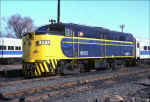
#607
Oyster Bay 01/19/1992
Photo: Kevin Gulau
This 1990s scheme was conceived by a senior manager
in the Morris Park Shops (now since retired) and was based on a past DL&W/EL color scheme. But - higher-ups would only allow blue
and yellow (from what I was told) NYS colors - and not retro colors using maroon and gray along
with yellow replicating this older scheme.
Info: Mike McEnaney

#607-WRK, To private owner as WM-303
Photo: Lars Byrne, Elkins, West Virginia August 2001
|
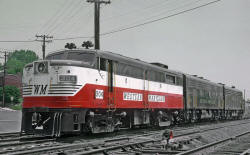
WM #304 Hagerstown, MD 5/10/1970
prior to
LIRR #608 as of 6/19/1972 Photo: Marty
Bernard |
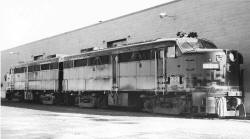
Ex-WM #304 awaiting rebuilding
Photo: Gene Collora Archive: Mike Boland |
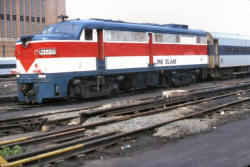
#608 coupled to the west end of
train at LI City passenger station. It sports a unique, experimental color
scheme. 6/1979 view NE
Photo/Info: Dave Keller
|
The picture of #608 was of an experimental early-Gabreski era color scheme
only used on that one unit. I liked this color scheme - but the trouble is that white is a tough color to
keep clean on power units like this one. Info: Mike McEnaney
Note: Former Western Maryland
#304
|
|
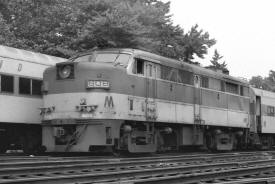
#608 Oyster Bay 1973
Photo/Archive: Richard Glueck
|

#608 WM horn Mineola 5/1976 Photo: Tim
Darnell
Built 01/51 ex-WM 304 
#608 at Sayville Renumbered to #3100 Photo: John Fusto 3/1988
|
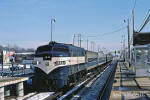
#608 Farmingdale 1/2008 Photo: Bill Mangahas |
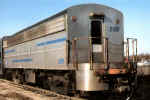
#3100 Port Jefferson
Photo: M. G. Lovis 12/06/1992
Archive: McEnery
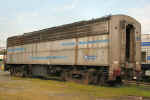
Renumbered #3100, 1991 provided HEP to the
C-1 bilevels before the FL9AC's arrived on property.
Photo: Bobby J. Kasza
|
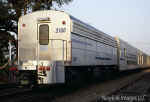
#3100 Photo: Bill Mangahas
Note: Sent to scrap 5/17/2018 |
The crew of electricians in the back shop worked their magic and produced in-house a unit capable of 480vac and 600vdc using the turn of a switch. Sheathed in stainless steel to match the C1 cars by the machinists, right down to creating the blue decals to somewhat match the cars. It was planned to be a stationary unit to supply yard power after the end of the prototype dual mode project, but fuel delivery problems from the original (ancient) fuel tank led to engine starvation problems, and eventually it was considered junk that was no longer usable to the LIRR.
The plaque on the door was dedicated to R. "Buff" Stickevers, who had emergency heart surgery just prior to the units completion, but sadly died during the procedure. He redid all the piping to change the unit from a loco to a car.
The plaque reads: Built and dedicated exclusively by the Morris Park Diesel Back Shop Dedicated to R. “Buff” Stickevers who passed away 1/23/91. The Buff is for Buffalo his nickname.
|
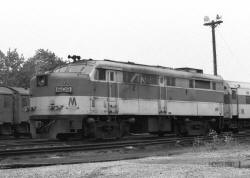
#609 Oyster Bay 1973
Photo/Archive: Richard Glueck |

#609 Patchogue 09/18/1977
Built 01/51 ex-WM 301

#609
Morris Park
Photo: Steve Hoskins
|
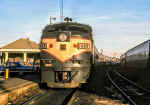
#609 Port Jefferson 1/29/1983
Photo/Archive: Kevin Gulau |

#609-SCRAPPED 10/1998
Photo: Bobby J. Kasza |
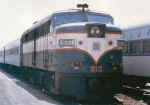
#610 LI City
Photo: Steve Hoskins
Built 01/51 ex-WM 302
|
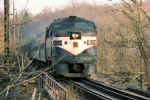
#610 Smithtown Viaduct NW |

#610-TO WM HIST SOC.,
To become WM-302, stored
at Colonie, NY 06/10/2006
Info: Tim Darnell
Photo: Ross Mealey
|
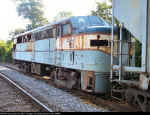
WM #302 to West Virginia Central.
0 7/12/08 Buckhannon, WV Collection: Pat Miller
Locomotives: BDLX 302 (FA-2) [BDLX (Big Dog Leasing) who is a division of PA
based scraper/rebuilder RMDI.]
|
| LIRR FA1 #611-616 |
Builder: ALCO-GE |
PC-7 Class
1949 |
Notes: 4,6 |
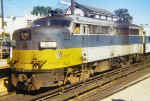
#611 Mineola 1974
Photo: Tim Darnell
Built 02/49 ex-BN 4102
|

#611 and train #4203 westbound at Medford 0 7/22/78 Wm. J. Madden photo, Dave Keller archive
|
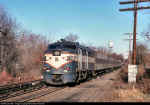
#611 Oyster Bay Branch vicinity of East Williston
Photo: Charles Freericks |

#611 at Bridgeton, NJ. Taken in 2005, it
looks basically the same. The gen-set was removed and the floor is being
modified to accommodate an Alco 251 engine. Work will begin when 601 and 602
are operational. Info/Photo: Tim Darnell
|
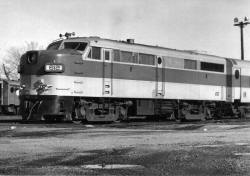
#612 Oyster Bay 1973
Photo/Archive: Richard Glueck |
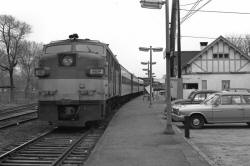
#612 Oyster Bay Station 1973
Photo/Archive: Richard Glueck |

#612 LI City Photo: Steve Hoskins
Built 2/1949 ex-BN 4100
#612 Photo: R. McEnery
|
FIRE, SCRAPPED 1993 |
|
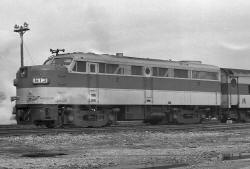
#613 Oyster Bay 1973
Photo/Archive: Richard Glueck
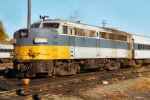
#613 1974 Oyster Bay
Photo:
Tim Darnell
Built 12/50 ex-BN 4120
|

#613 St. James c.1980
Photo: Len Torney

#613
Oyster Bay 04/05/92
Photo: Kevin Gulau

#613 Port Jefferson 11/13/1994
Archive: McEnery
|

#613
Morris Park
Photo: Bobby J. Kasza
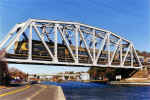
#613 Shinnecock Canal
Photo: William Skeats
|
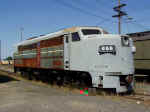
SP&S 866 (ex-lirr #613) to Pacific Chapter
NRHS at the Brooklyn
Roundhouse, Portland, OR. To be restored as a display engine in SP&S
colors. Photo: Nicholas Todd Info: Tim Darnell |
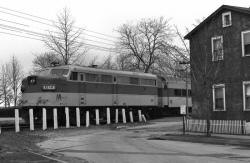
#614 Oyster Bay 1973 - Frost Mill Rd., Mill
Neck (below)
Photos/Archive: Richard Glueck
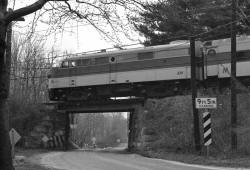 |

#614 1974 Kings Park
Photo:
Tim Darnell
Built 02/49 ex-BN 4104
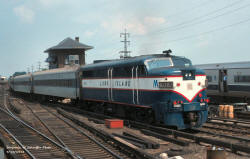
LIRR 614 passing HALL Tower, Jamaica View W 7/19/1979
Photo: Benjamin W. Schaeffer
Archive: Paul Strubeck |
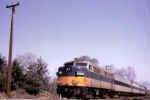
#614 West Glen Head 04/24/1973
Photo: Norman Kohl
Archive: McEnery

#614 Republic Airport Station 09/1985
Photo: Joe Tischner
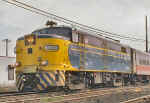
#614 Photo: Frankie
Retired
Oct. 31, 1999
|
![28 614 es Bridgeton 5-13-06 [tad d].jpg (73007 bytes)](28_614_es_Bridgeton_5-13-06_tad_d_small.jpg)
#614 at Bridgeton, NJ 6-06. After 611
is completed,
614 will be re-engined. Info/Photo:
Tim Darnell

#614-611 roof/rear shot 04/24/2004
Photo:
Tim Darnell
|

#615 Morris Park
Photo: Steve Hoskins
Built 04/49 ex-BN 4116

#615 Photo: Bobby J. Kasza
|
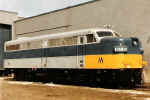
This may be the GE Apparatus Shop, N. Bergen, NJ after rebuild.
Photo: Henry Maywald, Archive: Al Castelli
|

SEPTA #615, making a rare daylight run at
Yardley, PA SEPTA station.
Used for leaf trains. Also #622
Info/Photo:
Tim Darnell

SEPTA #615 move to D&GV Railroad via CSX freight Q403 at
Woodbourne, PA 12/14/18 Photo/Archive: Tim Darnell
After #615 left the LIRR, a broker sold it to SEPTA, the transit authority in the Philly area. It was going to Virginia, but didn’t pass inspection
and repairs were too costly, so D&GV stepped in. Info: Tim
Darnell
|
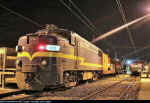
SEPTA #615 Has sandite tanks installed to combat slippery
rail/leaf trains. In service for four or five years. Location at Fox Chase. I believe they keep
#615 at Wayne Electric shops on the Reading side and #622 at Frazer shop on the western Main Line for the Pennsy side of SEPTA regional rail. Give SEPTA credit where its due for putting these units to good further use!
Info: Mike McEnaney
Photo: John Regan, posted by Bob Andersen
|
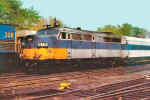
#616 Oyster Bay 06-76
Photo: Tim Darnell
Built 02/49 ex-BN 4108
|
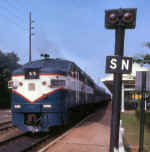
#616 at Southampton
07-1980
Photos: Jack Deasy |

#616 at Southampton
07-1980
Photos: Jack Deasy
|

#616
Valley Jct. Quebec 08/83 Photo: John Scala
Archive: McEnery
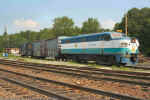
NYGL #7375 Campbell Hall, NY
07/08/2008
Photo: Michael Foley
|
| LIRR FA1 #617-618 |
Builder: ALCO-GE |
PC-6 Class
1947 |
Notes: 5,6 |

#617 at Greenport 05/07/1978
Photo: Mike Kubiak
|

#617 Huntington
Photo: William Skeats
|
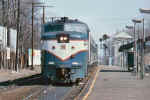
#617 at Patchogue c. late 1980's
Photo: Steve Hoskins

#617 LI City
Photo: Steve Hoskins
Arrived 10/47 ex-PC 1333 |

#617 Danbury Museum,
CT. 05-07-2000
Photo: Jeff Lubchanshy
Photo: Steven
|
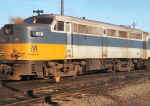
#618 1974 Oyster Bay
Photo:
Tim Darnell
Built 05/47 ex-PC 1330 |
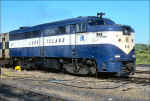
#618
Montauk 07/05/82
Photo: Kevin Gulau |
|
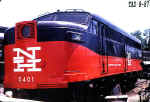
#618 CT Valley Museum RR Essex, CT
new NH #1401 paint scheme. I understand it is
going in for rebuilding soon, and will be painted another NH scheme!
Info/Photo:
Tim Darnell 1987 |
| LIRR F-9A, F-7As
#619-623 |
Builder:
EMD |
PC-7 Class
1950+ |
|
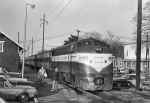
#619 St. James c.1980
Photo: Len Torney
Built 1/54 ex-MILW 126A:2
|
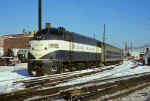
#619 Mineola 01/27/1984
Archive/Photo: Kevin Gulau
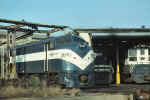
#619 F-9A Morris Park
10/28/89
Photo: Al Castelli
|

#619 Valley Stream 03-80
Archive: McEnery
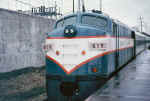
#619 F-9AWest Hempstead
Photo: Steve Hoskins
A diesel in electrified territory and at a station where diesel trains
NEVER ran, it’s a good chance this was a railfan extra . Info: Dave
Keller |
SEMINOLE GULF RR (FL) EXCURSION
TRAINS #501 9/2003 Info: Tim Darnell
|
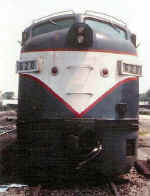
#620 F-7A Oyster Bay 8/01/1982
Photo: Al Castelli
Built 12/50 ex-MILW 85A:2 |
|
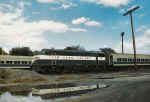
#620 F-7A Oyster Bay 10/06/1985
Photo: Al Castelli
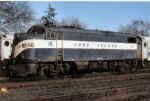
#620 F-7A Photo: McEnery
|
Willamette &
Pacific, Albany, OR then scrapped 2005. Info: Tim Darnell
|
|

#621 Mill Neck 5/1988
Photo: Kevin Gulau
F-7A Built 8/1952 ex-B&O 4599
|

#621 Port Jefferson 1992
Photo: Joe Saullo |

#621 Oyster Bay 8/1982 Recently out shopped
Photo/Info: Tim Darnell
|
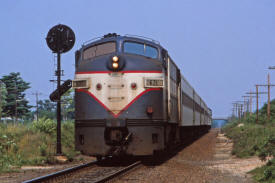
#621 Train #4201 from Greenport passes the westbound distant signal for CI,
east of Central Islip station. Due for a new coat of paint, the power pack
will soon sport the newer blue and white look, minus the red striping.
7/1984 Photo/Archive: Jay BenderskySeminole
Gulf Railway, Fort Myers, Fl xcursion trains #502 as of 2001 Info: Tim Darnell
|
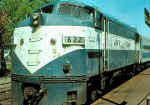
#622 F-7A Oyster Bay 1984
Built 11/1950 ex-B&O #4524
Photo: Tim Darnell
|
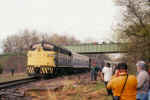
#622 LIST Fantrip in CT. 1996
Photo: Joe Saullo
|
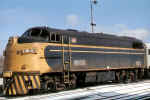
#622 Port Jefferson 02/07/1993
Photo: M. Louis
Archive: Leah Mcenery

B&O
#4535 (parts), B&O #4524 (LIRR #622)
Morris Park 3/1981
Photo: Tim Darnell |
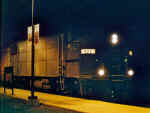
To SEPTA
#622, At Hydro Power in Bridgeton, NJ for salvage of the HEP unit in 2000.
Moved to SEPTA in April 2001 for gel train service. Usually stored in
Frazer, PA. Info: Al Castelli
Photo: Tim Darnell at SEPTA Yard, Yardley,
PA 3/2007 on gel
run
|

ex-B&O #4535 c.1982 F-7A at Marshalltown, Iowa
prior to
move to LIRR as #623
Photo: Jim Sands 1982
|
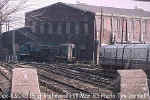
#623 F-7A Arrived 3/1983 ex-B&O 4535 Was to be
converted in 1983 but never rebuilt by LIRR.
Shell reportedly scrapped by LIRR, never put into service.
Info: Al Castelli
Photo: 3/1983 Tim Darnell at Richmond Hill, note M-1 trucks
|
|
|
NOTES:
(1) 600 originally New York
Central 1102 built in 1951, then Penn Central 1302, then LIRR 600 03/5/74. |
|
(2) 601-606 were originally
Louisville & Nashville 317, 309, 315, 314, 310, 321; then LIRR 601-606
(5/6/71, 6/30/71, 8/4/71, 9/7/71) |
|
(3) 607-610 were originally
Western Maryland 303-304, 301-302; then LIRR 607-610 (5/2/72, 6/19/72,
9/23/72, 10/20/72). |
|
(4)
611-614 were originally
Spokane, Portland & Seattle 856A-2, 856A-1,866A-1, 858A-l; then SP&S 857, 856,
866, 858; then Burlington Northern 4102, 4100, 4120, 4104; then LIRR 611-614
(8/7/72, 11/27/72, 2/14/73, 3/7/73). 615 was originally Great Northern 442A,
then SP&S 864A-1 (4/49), then SP&S 864, then BN 4116, then LIRR 615
(4/18/73). 616 was originally SP&S 860A-1, then SP&S 860, then BN 4108, then
LIRR 616 (7/28/73), then LIRR 616 being sold to NY&GL 7375 (07/2008). |
(5) 617-618 were originally New
York, New Haven & Hartford 0428, 0401; then PCT 1333, 1330; then LIRR
617-618
(4/27/74 - 6/16/74). |
|
(6) LIRR bought a bunch of
them, removed the traction motors and set up the engines so they would
generate HEP for converted former MU cars to be used in push-pull service.
Motive power to make the trains move was usually GP38-2 or MP15AC, though in
the early days they still had some C-420's around. In later years, some of
the LIRR FA's were rebuilt and the original Alco 244 engines/generators were
removed. They were replaced by a "sled" -- a removable engine/generator set
-- with a smaller truck-type Detroit Diesel to drive the generator. |
|
(7)
605 at Montauk: In the yards and still visible in Speonk and Montauk along with a few other diesel
yards, they had stationary "hotel" power connections where they used to plug in the cars.
The standby power receptacles, with a fresh coat of yellow paint, are visible in
this photos at Montauk. They were used to plug in the old Parlors in Montauk. Not the "Sunrise Fleet" ones, the earlier heavyweights and their successors. People would spend the night in those cars from what I remember so stand-by power was necessary. In the Storage Yard, they did have 600VDC to plug in consists when needed. It wasn't so much to save on fuel or noise, but to not have to have the inconvenience of having a P-engine of Power Pack to supply power.
Info: Jack Deasy |
|
SURVIVING
UNITS:
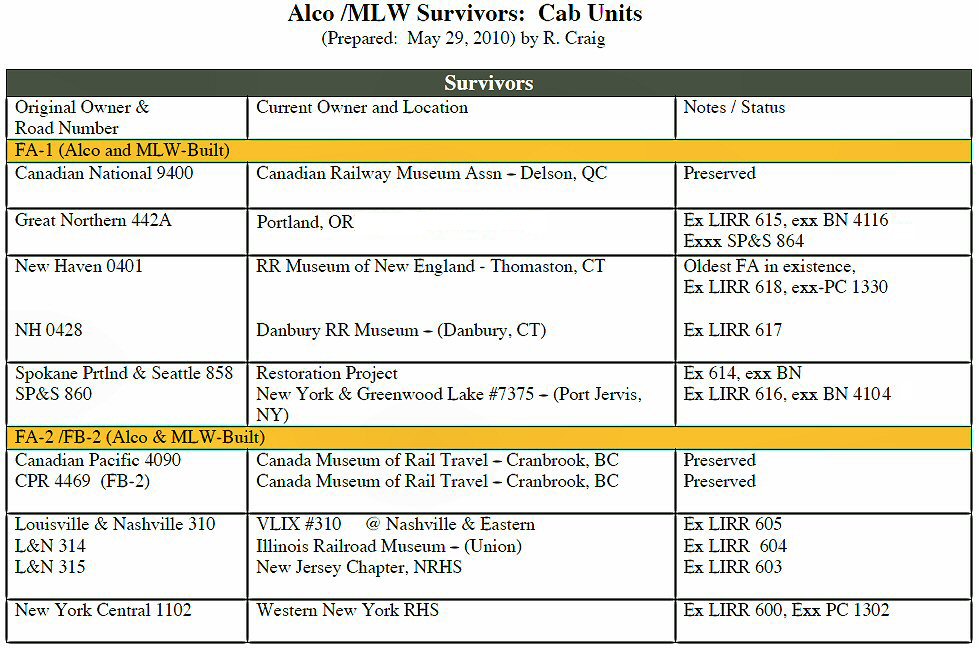
|
|
EX-LIRR UNITS
STATUS |
|
600 is part of the Western New York
RHS(?)
601, 602, 611 and 614 owned by Bob Losse, leased space on SMS Rail Lines,
Bridgeport, NJ to restore them. 10/03/2020 Info: Richard
Glueck. 602 to Adirondack Railroad 12/2025
603 ex-L&N #315 in 1970. Stored (and hopefully restored?) in the Delaware Lackawanna yard
in Scranton, PA as #596
604 is restoring as FA L&N 314 at the Illinois Railway Museum
605 is preserved in Nashville, TN
606 was scrapped due to a wreck in 1988 Park Avenue, Huntington grade
crossing accident when it struck a backhoe on a trailer that bottomed out
on the crossing. Info: Mike McEnaney
607 is now WM 303 and is currently sitting in Barton, MD
608 became power unit 3100 and is now scrapped
609 was scrapped due to a wreck
610 is now at the West Virginia Central(?)
612 was scrapped due to a wreck
613 is preserved in Portland, OR
615 was sold to SEPTA as a work unit
616 New York and Greenwood Lake
Railroad, Passaic, NJ. Donated for the Port Jervis Railway
Museum. 10/2020 Currently a shell and remains rigged as a power car.
617 is preserved in Danbury
618 is preserved in Thomaston, CT(?)
619 Seminole Gulf Railway SGLR #501 Fort Myers, FL as of 2/2016
620 Willamette & Pacific, Albany, OR then scrapped 2005 Info: Tim
Darnell
621 Seminole Gulf Railway SGLR #502 Fort Myers, FL as of 12/2015 |
|
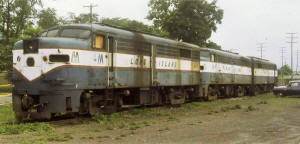
ex-LIRR #601, 603, 602 Reading, PA Photo/Archive: Bob Losse
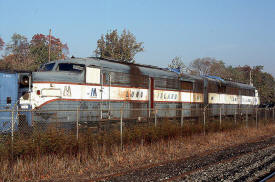
ex-LIRR #601, 602 Norristown, PA 10/26/1988 Photo/Archive: Bill Mangahas |
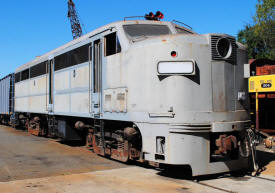
ex-LIRR #602 SMS Lines shops, Bridgeport, NJ 10/03/2020
Photo/Archive:
Bob Losse |
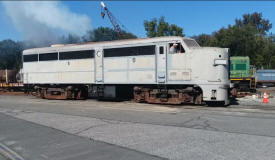
ex-LIRR #602 under its own power after 49 years! SMS Lines shops,
Bridgeport, NJ 10/03/2020 Photo/Archive: Bob Losse |

Adirondack Railroad - ex-LIRR #602 12/2025 |
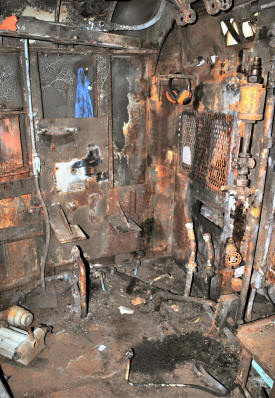
ex-LIRR #601 Engineer side 24RL Air Brake
2011
Photo/Archive: Bob Losse |
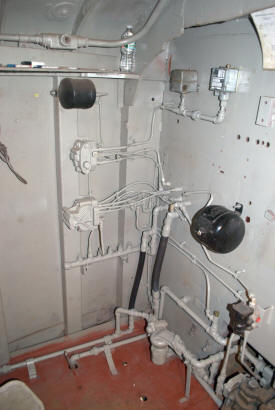
ex-LIRR #601 26FNL Air Brake
2012
Photo/Archive: Bob Losse |
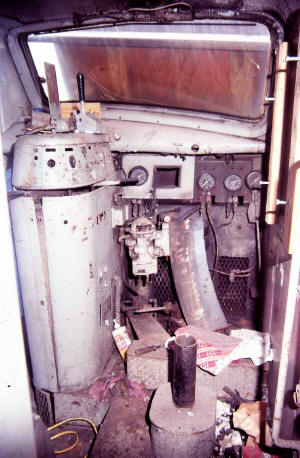
LIRR #602 Original Engineer's position
Photo/Archive: Bob Losse |
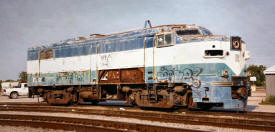
FA1 KLIX #7375 ex-LIRR #616 - Diesel Era - Vol 36 No.3 2025 |
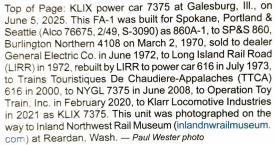 |
|
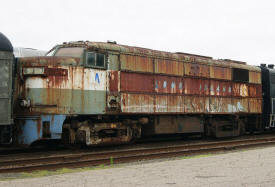
ex-LIRR #617 Danbury Railroad Museum 6/23/2018
Photo/Archive: Bill
Mangahas |
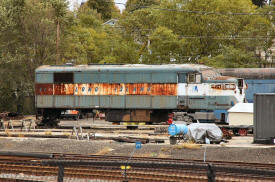
ex-LIRR #617 Danbury Railroad Museum c. 2000
Photo/Archive: Steven Lynch |
|
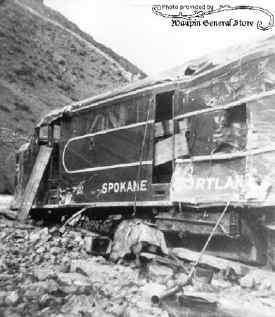
ex-LIRR #611 fished out of the Deschutes River, OR |
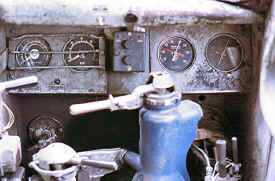
FA cab at the Vancouver,
Washington diesel shop
Photo: James L. Abney |
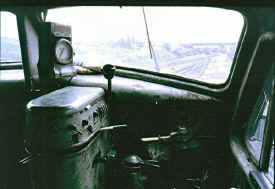
FA cab at the Vancouver,
Washington diesel shop
Photo: James L. Abney |
|
Here's a picture of the
SP&S 857, BN 4102, LIRR 611 taken after it was fished out of the
Deschutes River after it went swimming following hitting a rock just south
of Maupin, Oregon on the Oregon Trunk Railway. Many years later in
September 1971 it had the honor of pulling the LNER 4472 (Flying Scotsman)
across part of Montana after the steamer experienced firing problems due
to poor coal quality. I rode the 4472 between Pasco and Wishram,
Washington and then chased it on the Oregon Trunk to Bend, Oregon.
Photo/Research: James L. Abney |
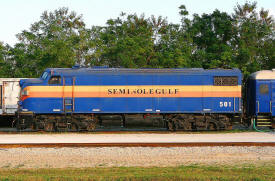
Seminole Gulf Railway - SGLR #501 ex-LIRR #619 Fort Myers, FL
12/10/2006 - Photo/Archive: Rob Schreiner |
-ex-LIRR-621-Fort-Myers-FL-7122007-KyleYunker_small.jpg)
Seminole Gulf Railway - SGLR F7A #502 ex-LIRR #621 Fort Myers, FL
7/12/2007 - Photo/Archive: Kyle Yunker |
|
|
Seminole Gulf Railway as of March 23, 2025 Data:
Rich Adams |
|
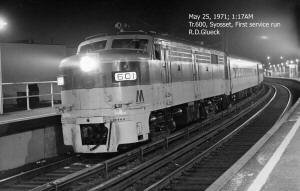
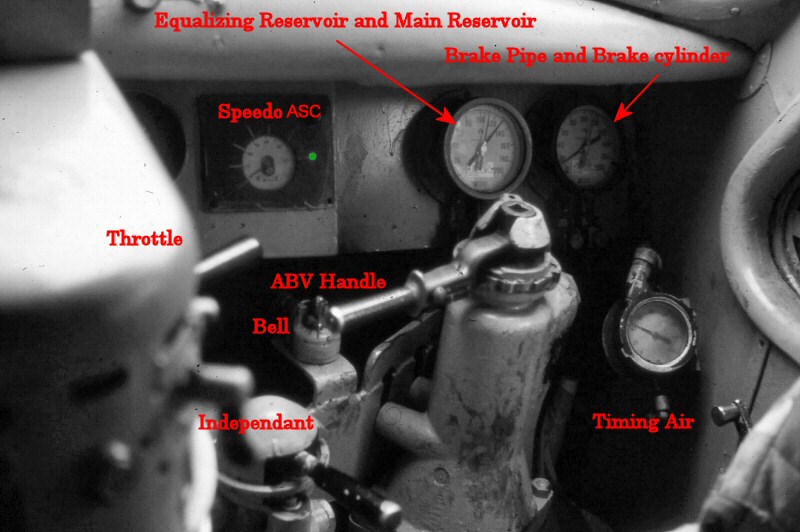
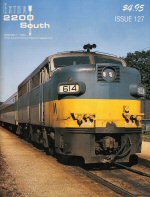
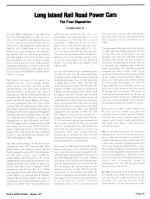
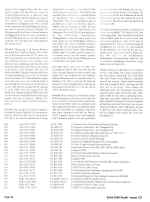
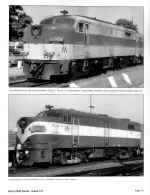
















![601 Bridgeton NJ 6-06 [tad d].jpg (83128 bytes)](601_Bridgeton_NJ_6-06_tad_d_small.jpg)





![602 Bridgeton NJ 6-06 [tad d].jpg (88619 bytes)](602_Bridgeton_NJ_6-06_tad_d_small.jpg)




![NYC FA Win Jct 11-11-05 [tad d] big.jpg (175924 bytes)](NYC_FA_Win_Jct_11-11-05_tad_d_big_small.jpg)






























































![28 614 es Bridgeton 5-13-06 [tad d].jpg (73007 bytes)](28_614_es_Bridgeton_5-13-06_tad_d_small.jpg)























































-ex-LIRR-621-Fort-Myers-FL-7122007-KyleYunker_small.jpg)